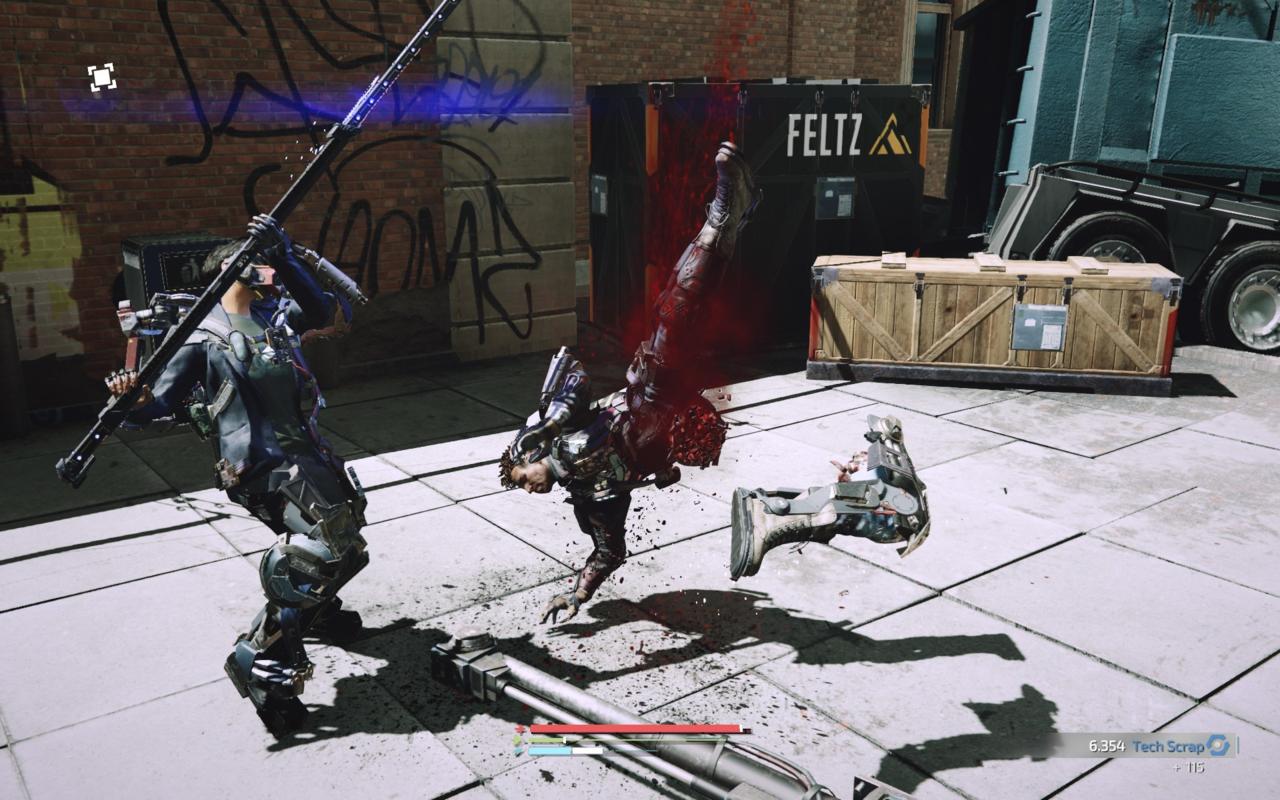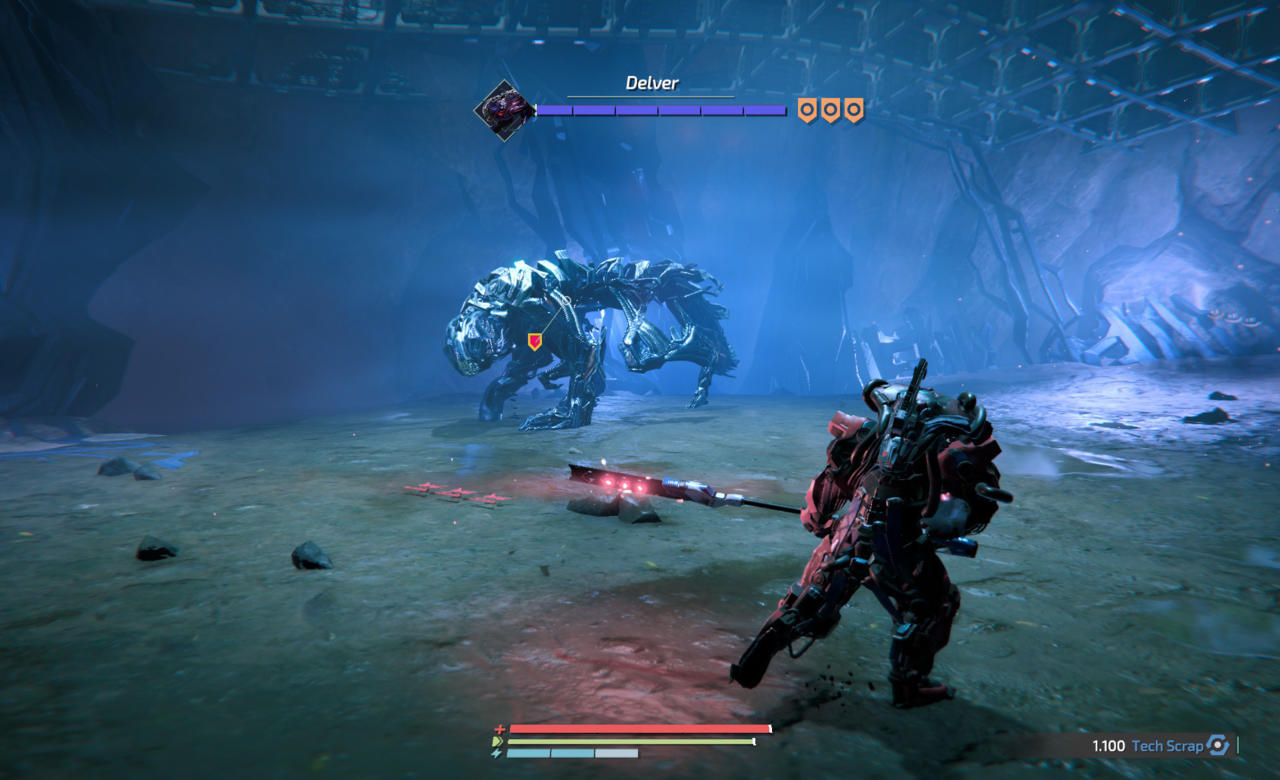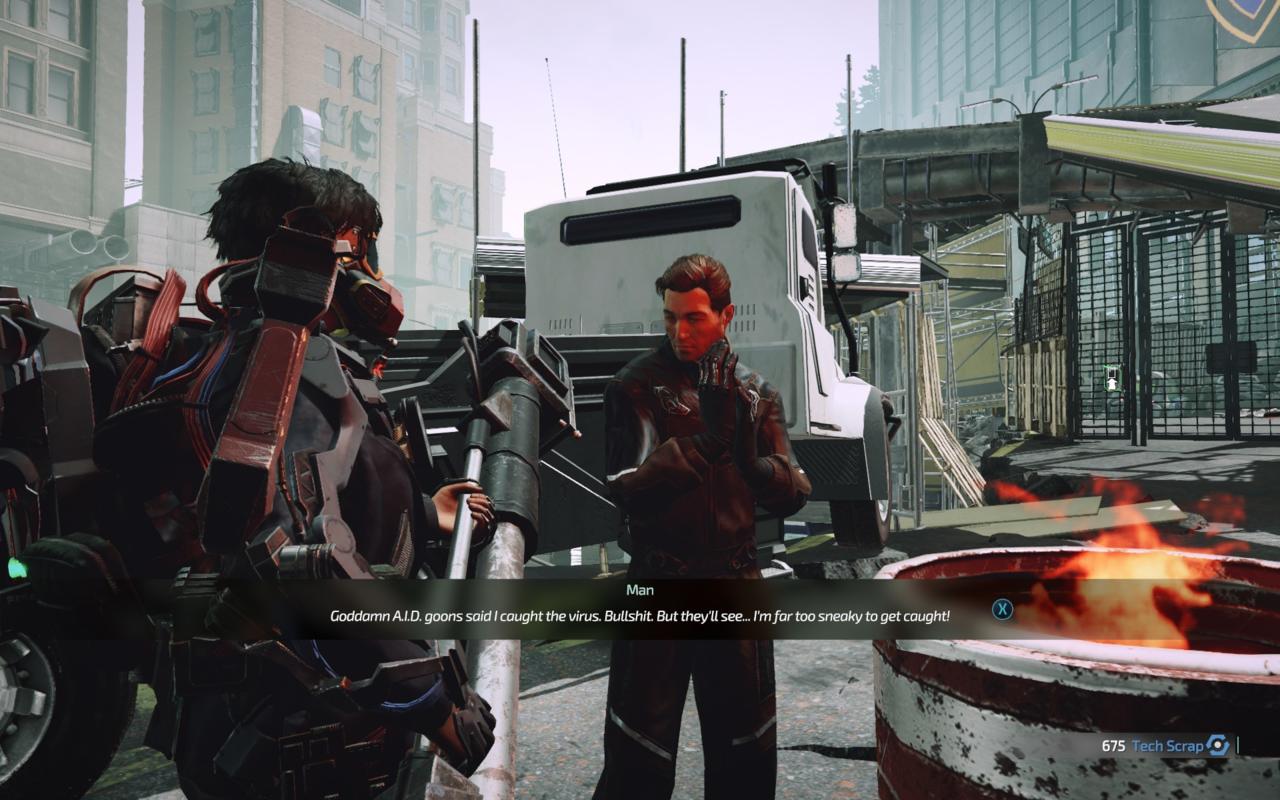Up a short flight of stairs and down an alleyway from the initial hub of the first major area in The Surge 2 is a door that can only be opened from the other side. Roughly a dozen hours later you will find yourself standing on the other side of this door before opening it and returning to the very place in which you began, keenly aware of how far you've progressed while not really traveling anywhere at all.
Yes, The Surge 2 is that kind of game: an action RPG with a looping, labyrinthine structure and a heavy debt owed to Dark Souls. It's a hard game in the sense that it demands patience and attention to detail, but it's not especially punishing. Sure, when you die or rest at a medbay (read: bonfire) all the enemies respawn and many of them can kill you in a couple of hits. And sure, you have to make it back to where you died to recover your tech scrap (read: souls). But as with the Souls series and its ilk, this isn't really a game about clearing an area and leveling up; it's about learning through repetition and deepening your understanding of the game.

On a purely mechanical level, the robust combat engine, intricate level design and substantive gear, and crafting systems all leave The Surge 2 far from embarrassed by the From Software comparison. Yet where The Surge 2's blushes are not spared is in giving you a reason to care about anything you're doing. Lackluster world-building, forgettable characters and cringeworthy dialogue all conspire against persuading you this is a world worth saving.
It begins with a plane crash. On board was some sort of nanotechnology that triggers an environmental disaster requiring a city-wide quarantine and leaving those infected to wander the streets with a permanently hostile demeanor. You were also on the plane, yet somehow survived the crash and, at the start of the game, wake up in the medical wing of the Jericho City Police Department. Soon you're having sporadic visions of a young girl, the granddaughter of the CEO of nanotech firm CREO Industries, who you're sure was also on the plane and now appears to have been kidnapped by a mysterious security force.
There's not a great deal to the story and what little there is quickly reduces to stale sci-fi musings about the relationship between humans and machines and all sorts of hackneyed military-industrial complex pot-boiling. Your pursuit of the elusive young girl is essentially the pretext for exploring the multi-faceted and interconnected districts of Jericho City and whacking nearly all of its inhabitants in the face.
Fighting in The Surge 2 feels strategic and skillful. There's the element of stamina management you'd expect--you've got to understand when you can commit and when you need to pull back and recover. There's the ability to manage multiple enemies when any one of them alone is dangerous enough to be life-threatening if you're not careful. And there's the necessity of learning to read enemy attack patterns--one may be quick and aggressive, while another is slower and turtles behind a shield, and a third may hang back and takes pot shots.
Combat is almost exclusively focused on melee attacks. There are dozens of weapons to be wielded in one hand or two and each can be deployed in heavy and light attacks as well as combos that alternate between the two. Movesets are shared across a weapon class but various stats--such as base damage, stamina consumption or additional damage types--serve to differentiate unique weapons within the same class. All spears, for example, have the same long reach and forward thrusting attacks, but this one hits slightly quicker for less damage while that one consumes more stamina per attack but delivers bonus electrical damage every hit.
Smartly, no weapons are simply outright better than the others, meaning your choice of armament comes down to a combination of what you've managed to find, which particular mix of moveset and stats suit your preferred playstyle, and to a lesser extent the nature of the obstacle you're trying to overcome. Some weapons are better suited to certain situations, but ultimately it comes down to how you want to approach combat. Weapons taken from the one-handed (think futuristic longswords) and twin-rigged (think futuristic knuckle-dusters) classes hit with speed and will let you get the drop on an enemy then deliver a swift combo. Hammers and anything from the heavy-duty class will instead take longer to wind up but when they hit they hit hard and can easily stagger an opponent.

I enjoyed the flexibility of the double-duty class, a weapon type that can transform between slow, heavy hits and a quick flurry of blows. And for situations that warranted a different tactic I switched to a staff for the longer reach of its whirlwind attack and some added nano damage. There's a huge amount of variety here and, after briefly testing out each new weapon I found during my initial playthrough, I'm looking forward to exploring different weapon loadouts in future playthroughs.
That's mostly because fighting in The Surge 2 feels really good. Aided by the meaty impact of the sound effects and the responsiveness of the character animations, you can feel the weight of each attack in a manner that never fails to satisfy. Successfully deflecting an attack rewards you with wonderfully gratifying "whomp!" sound, a brief freeze-frame and slow-motion interlude as the enemy is staggered and you're given the opening to launch a critical strike. Better, perhaps, are the cinematic slow-mos seen when you are able to sever the limb of your opponent, with your character drawing from an impressively wide range of stylish deathblow animations that are solely interested in making you look like the most effortless badass in the post-apocalypse. Be warned, however: they are not for the squeamish (and, fortunately, there's an option to disable these scenes to reduce the gore factor.)
But it gets even more complex. When locked on to an enemy you are able to target individual limbs, switching between the head, body, arms, and legs with a flick of the right analogue stick. You want to do this for two reasons. One, some limbs may be unarmoured, thus targeting an exposed left arm will let you do more damage and hasten the kill. Two, if you do enough damage to a particular limb you'll get the opportunity to chop it off and, in a curious application of game logic, claim it as a material for crafting. Once you've beheaded an enemy enough times you'll have the materials necessary to craft a new piece of headgear or upgrade your existing one. The tantalizing risk/reward here is obvious: do you go for the weak point or prolong the fight in order to get that vital crafting component? Boss fights double down on this element, with some of them forcing you to hack off multiple limbs to bring it down while others drop special boss weapons if you target the relevant limb during the fight.

Furthering the complexity, you can also block attacks (assuming you have sufficient stamina) by holding down L1/LB, but to deflect an attack you've got to block and flick the right stick in the direction of the incoming blow at the precise moment; mis-time your attempt and you're going to take the hit. It's not just another great risk/reward setup, it also reveals one of the clever ways The Surge 2 handles its difficulty. While there aren't selectable difficulty levels per se, you can equip various implants that boost your character in certain ways, one of which provides a UI indicator letting you know from which direction the next attack is incoming. So if you want to adopt a playstyle around deflecting attacks and you're not yet familiar with reading enemy attack animations, you can equip this implant and receive a very useful visual aid.
It's a really smart system that extends into other areas, too. Implants consume core power, a character stat that increases as you level up, and typically the more useful an implant the more power it consumes. Armour also draws power from the same source, and--yep, you guessed it--the better the defensive stats, the more power it draws. You never have enough core power to simply equip your best armour set and all your favorite implants, so this is where you have to make tough choices about what type of character you're going to be. There were plenty of periods, especially in the early to mid-game, where I had to leave some armour and implant slots empty because I simply didn't have the power available to fill them. It's in these situations, when you're having to sacrifice useful tools and really commit to a playstyle, that The Surge 2 shines as an RPG.
It also shines in its level design--at least it does so in a somewhat cold, theoretical fashion. Like Dark Souls, The Surge 2 trades heavily on a Metroidvania structure that sees you traversing its levels in a kind of circular fashion, pressing forward until you find yourself back where you started only now you've unlocked a shortcut that lets you press further forward. Later, you will return to many of the previously visited locations and explore them anew, having acquired certain key items that allow you to access areas previously inaccessible.
There's nothing especially novel about that structure. The Surge 2 is simply an extremely accomplished version of it. The areas you explore are just so tightly designed, so compact and yet simultaneously sprawling and dense. There's almost a honeycomb quality to the level design, this vast network of winding tunnels existing almost on top of each other, branching and converging in surprising ways. No space is wasted.
It's just a shame few of the locations are memorable for reasons other than how they connect to other locations. There's a midgame detour to a rather scenic wooded parkland, the odd impressive future city skyline vista, and the constant looming presence of the giant metal wall that was hastily erected after the nano-disaster struck. But in between everything is basically the same handful of debris-strewn streets, toxic tunnels and partially collapsed buildings--and it's all so boringly brown and grey. More than a mere aesthetic complaint, it actually makes it difficult to find your bearings at times. I found myself getting lost and turned around on quite a few occasions thanks to the unremarkable nature of much of the scenery.

Worse, the characters you meet along the way are equally soulless, if not more so. Conversations with major NPCs are written as if they're throwaway sidequests, eschewing any sense of character development in favor of laboured exposition. The actual sidequests, of course, fare no better--to their advantage at least they're quick and to the point, even if they barely resolve and rarely offer a reward worth the effort.
Story and sidequests aside, however, The Surge 2 is absolutely worth the effort when the combat is taken in isolation. Not only does it pack a punch, but it also channels plenty of depth in its limb targeting and deflection systems, and is ably supported by a genuinely varied collection of weapons and potential character builds.







































